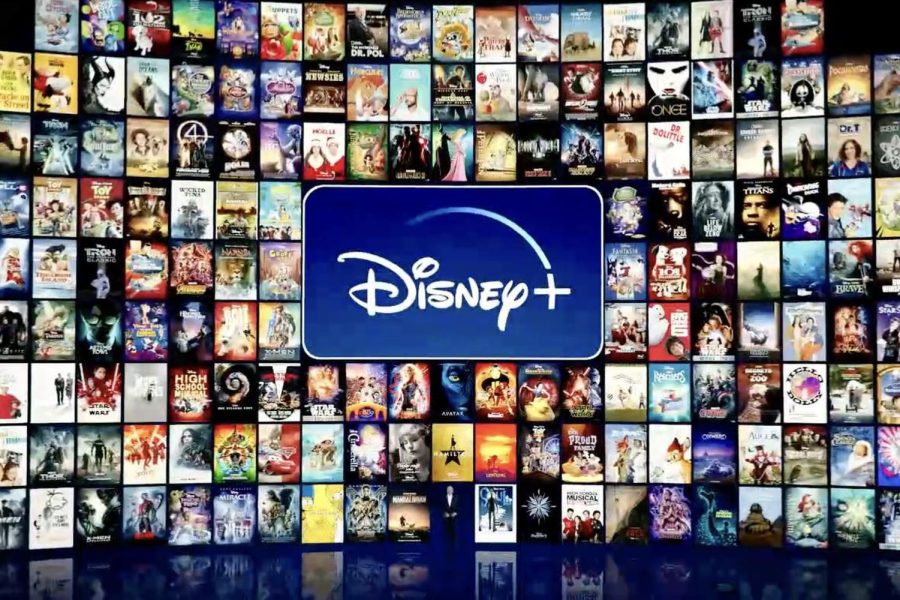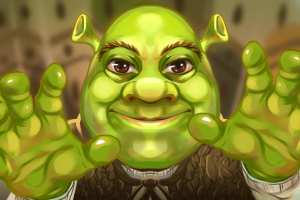Disney+, What Does That Mean for Us?
Disney+ marks the oversaturation of the streaming industry, giving an unclear future.
Nov 28, 2019
On Nov. 12, 2019, The Walt Disney Co.’s new streaming service Disney+ was launched in the United States, Canada, and the Netherlands. Disney’s new venture into the streaming industry is part of the rising trend of large production companies launching — or planning to launch — their own streaming services, with Time Warner Cable and NBC serving as other examples. This article will not be a critique of Disney+ and its crashing on launch. Rather, this article will serve to answer the following questions: How did things get this way? Have there been similar events in the past? What does having this amount of streaming services mean for the consumer? What can be done in the future?
First, to understand what allows streaming services to operate, it is necessary to look at the current playing field. Currently, there are seven major streaming services: Netflix, Hulu, Disney+, Amazon Prime Video, CBS All Access, and Apple TV+. Each specific streaming service has its library of both non-original content and original exclusives, like Netflix having “Breaking Bad” and “Stranger Things” respectively. Now, why can’t a service like Netflix stream one of the non original exclusives on Hulu, like “Lost?” Well, the answer is fairly simple: Companies want to maintain exclusivity over intellectual property. A show or movie being considered an intellectual property means it is protected by law against unlawful plagiarism and redistribution. In other words, intellectual property is, to some extent, its own monopoly as no other entity can have it. Therefore, when a streaming service has exclusive rights to a show, they technically have a monopoly over that show. Then, as when any monopoly is present, there is little to no competition. Technically, while the content is a monopoly, the small group of streaming services would be considered an oligarchy, but this still renders little to no competition. In this scenario, competition can be explained as having the most shows to attract the most viewers. When this is the case, services like Netflix cannot “compete” with Hulu as there is only one “Lost” that cannot be replicated. When done enough times among multiple services with multiple intellectual properties the “competition” will be diluted to every service only having a small selection of shows that people want to watch. What does this mean for the consumer?
Within an ecosystem of healthy competition, the consumer generally wins. The competitors will always do something to improve their product, whether that be through innovation or trying to maintain quality while lowering production costs. However, as stated earlier, within oligarchies, there is little to no competition. In the case of these streaming services, there is no need to compete and innovate because the consumer will more than likely pay for multiple services to watch their favorite shows. Thus, these services are swindling people of their money because of their need for entertainment. As a result, if more services begin to rise leading to access to fewer popular shows amongst each service, consumers would eventually turn to piracy for their shows and movies.
While streaming services are rather new, there was once a similar issue in the ‘30s and ‘40s with production companies and movie theaters. In brief, production companies, like Paramount Pictures Corporation, Metro-Goldwyn-Mayer Studios Inc., and Warner Bros. Entertainment Inc., were buying or making partnerships with theaters to only screen their movies, often through the practice of block booking, which is selling multiple films as a unit. These production companies were vertically integrated, meaning a company owns two or more stages of production usually performed by other companies, as they owned both the means of production and distribution. As a result, these production companies were creating an oligopoly with little reason to compete against one another. Eventually, this whole issue found its way to the Supreme Court of the United States in the case of United States v. Paramount Pictures, Inc. in 1948. Using the precedent of the Sherman Antitrust Act of 1890, the Supreme Court held that the practices of these production companies were anti-competitive and monopolistic. Seeing the scale that this issue came to, it begs the question of what can be done for streaming services now?
There are a few possible scenarios that can happen in our current situation. One scenario is that consumers allow streaming services to continue down their current path. This would probably lead to the oversaturation of the industry. Then, within this scenario, consumers would then turn to piracy as their main source due to the decreasing quality of these services. A second scenario is the end of exclusivity. With the end of exclusivity, multiple services can have the same shows, similar to movie theaters. Thus, they would be competing through the innovation of their user interface, cheap prices, etc. This scenario would lead to further competition between all the services. A final scenario could be one where there is only one service for all the popular shows that could be accompanied by more niche streaming services for things like documentaries and independent works. In this scenario, the consumer gets various options for services, as each service will revolve around interests as their selling point rather than specific properties. Thus, despite there being the main service, the addition of other smaller services will keep the big one in check, creating competition similar to scenario two.
All in all, the issue of streaming services is still quite young, considering Netflix only launched its current streaming services 12 years ago. However, the pace with which streaming has grown cannot be ignored and is quite frankly becoming a major problem. While no one knows what the future holds, Disney+ marks a major tipping point for this industry.
Image courtesy of The Verge

















